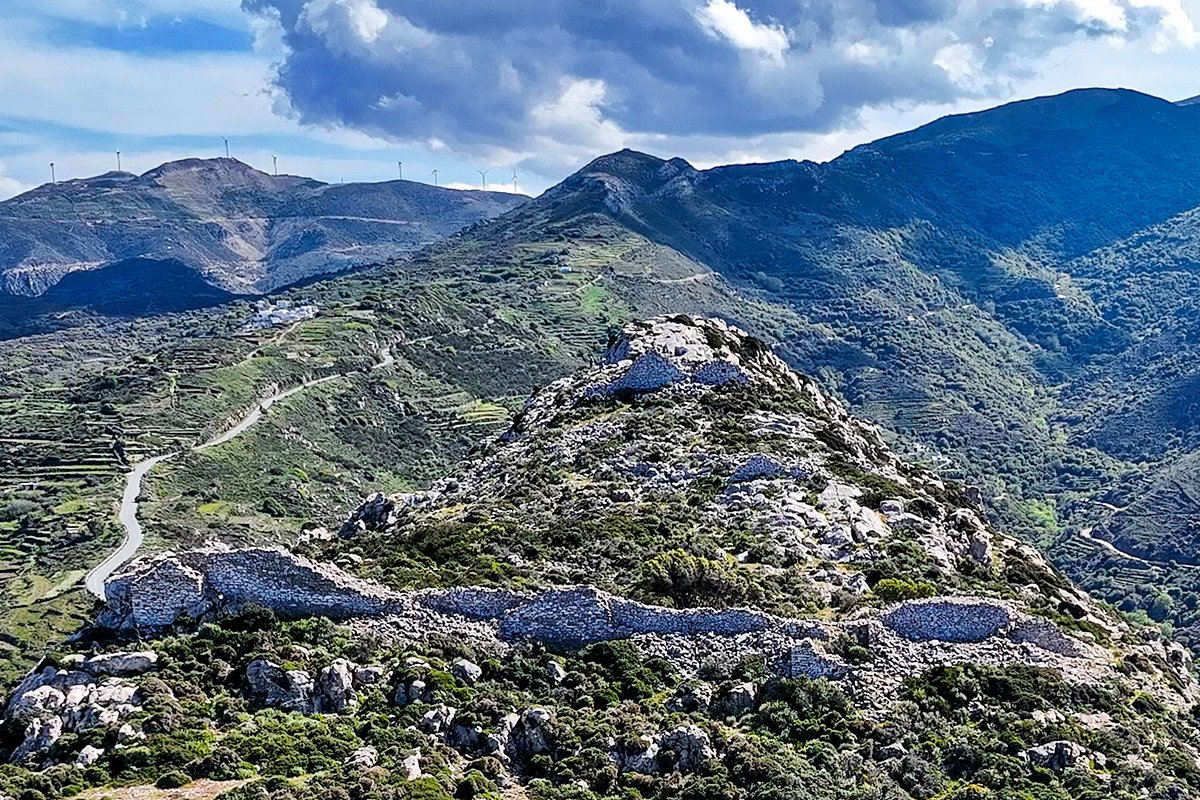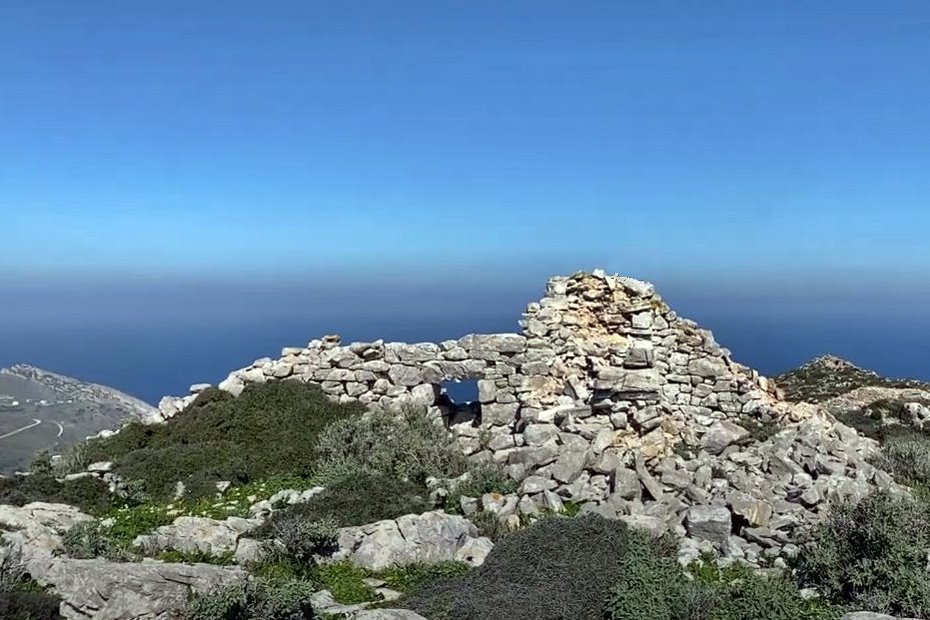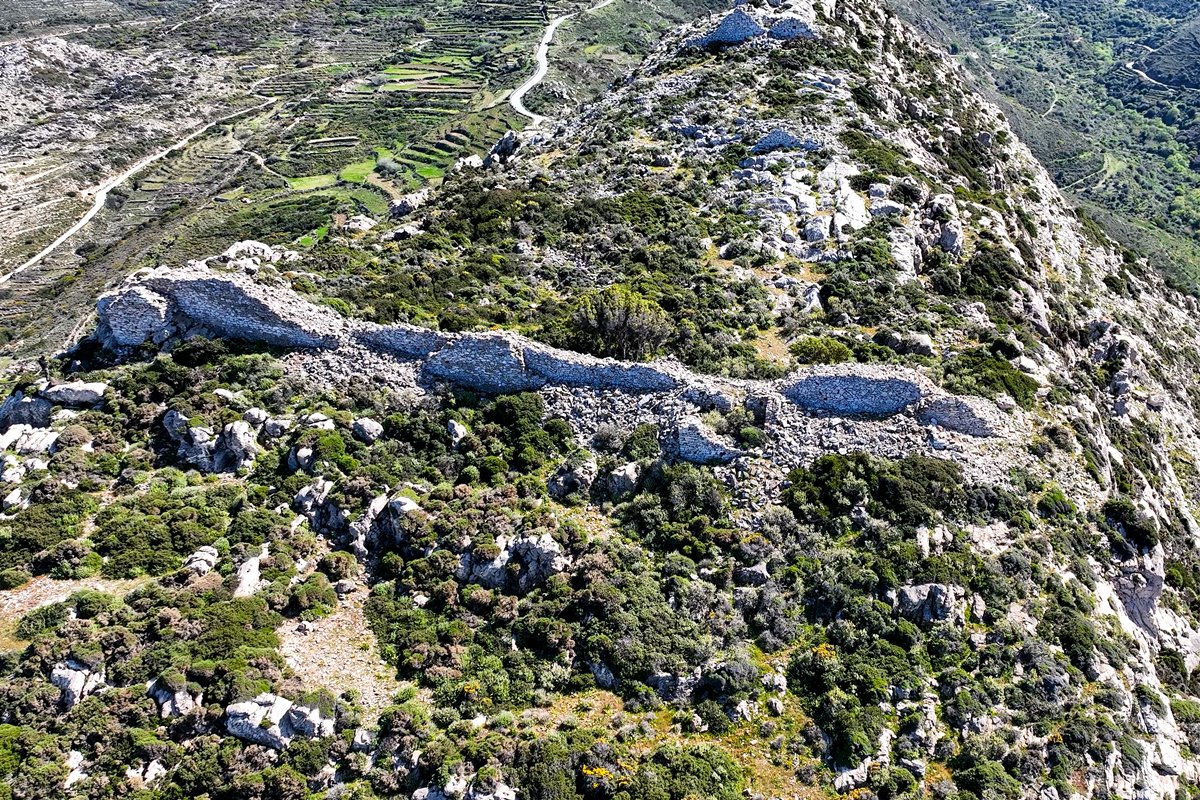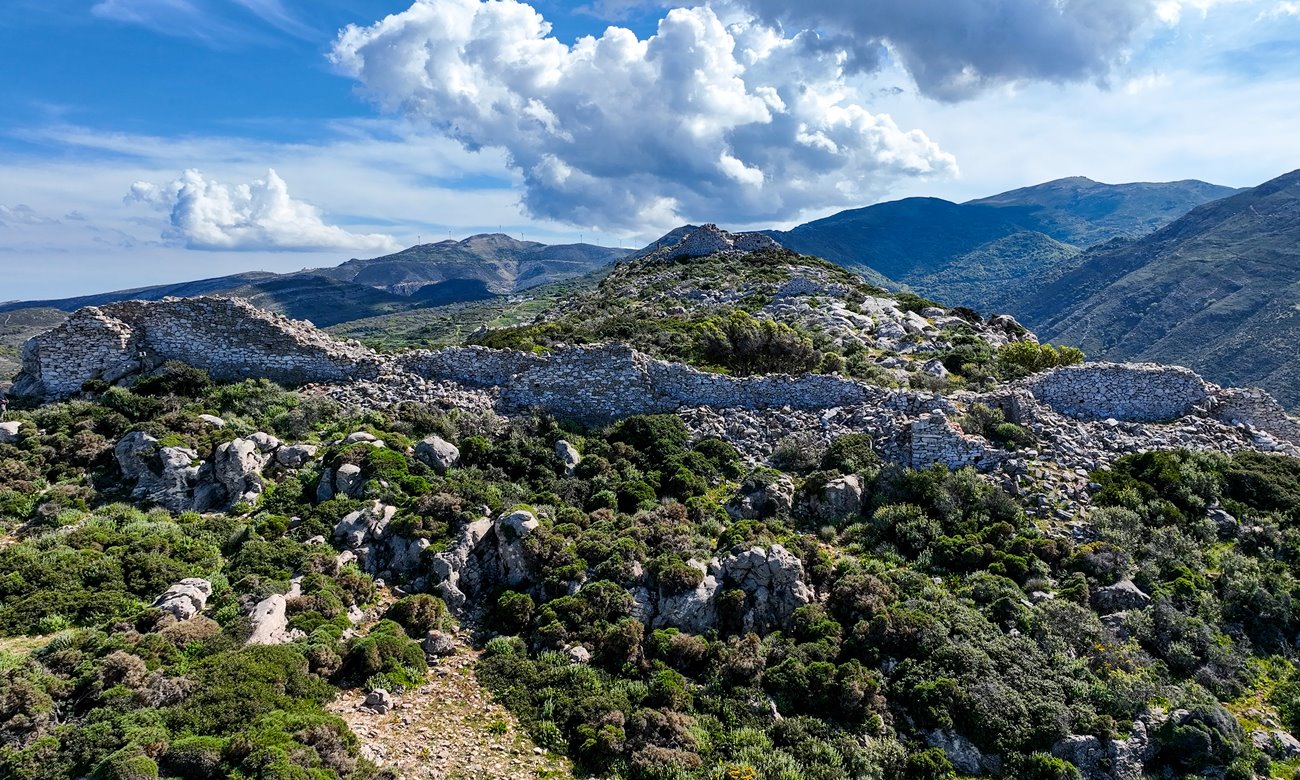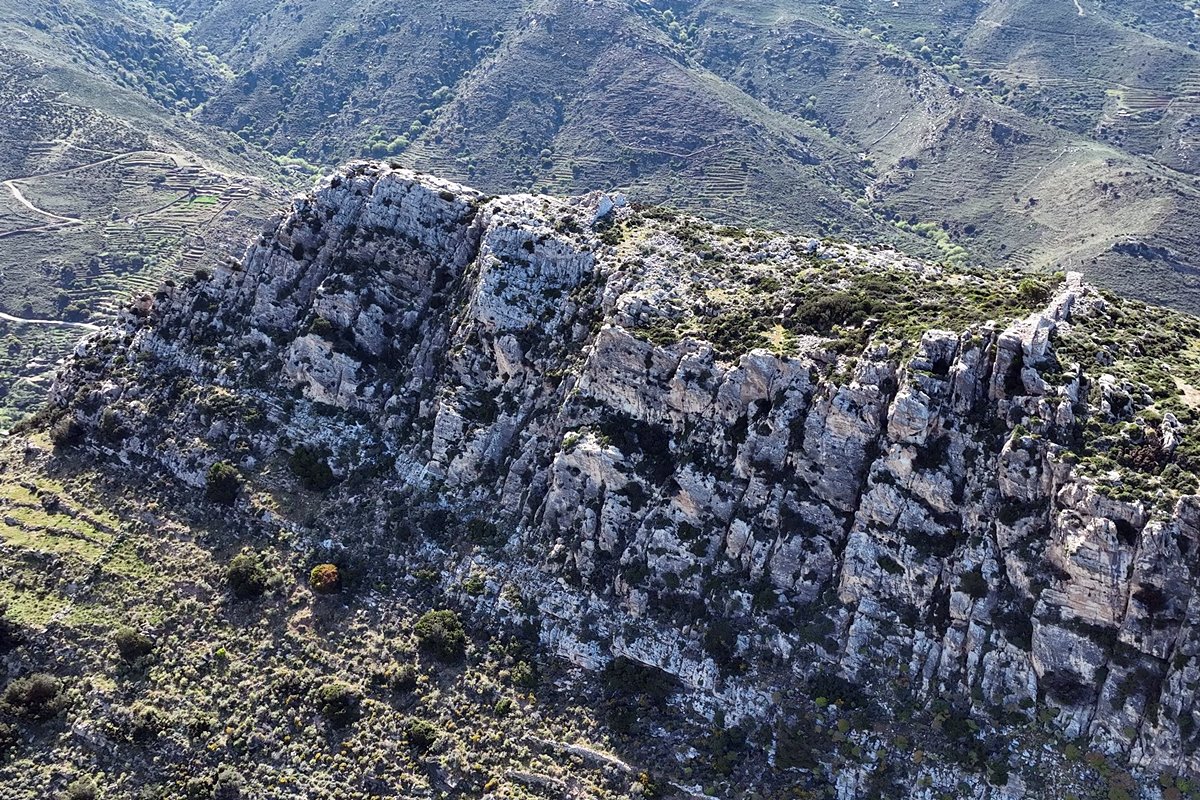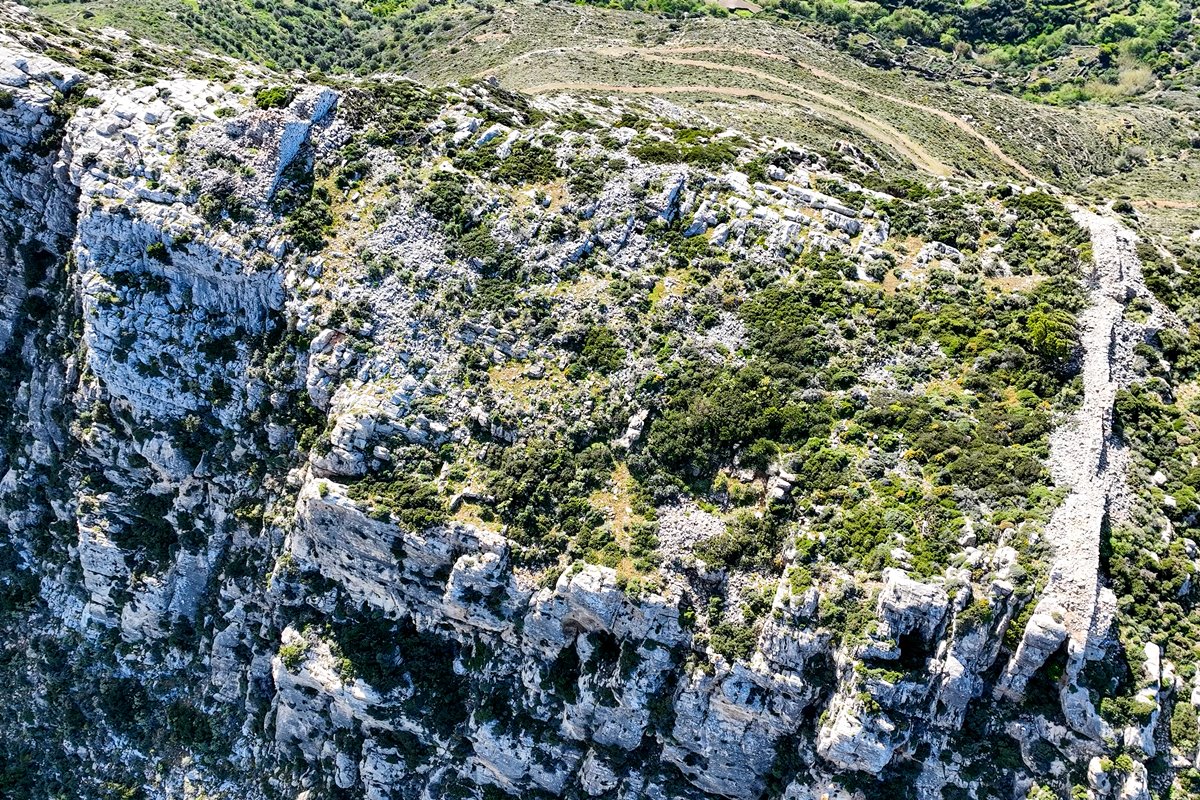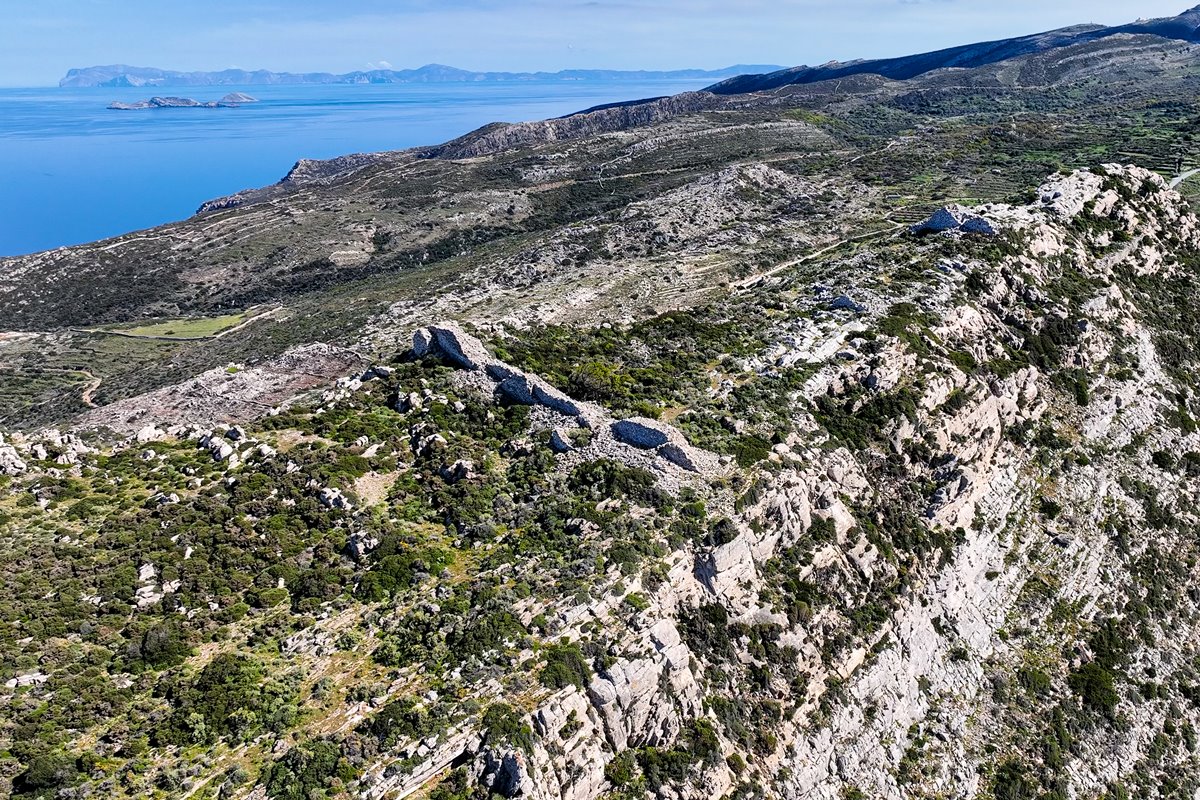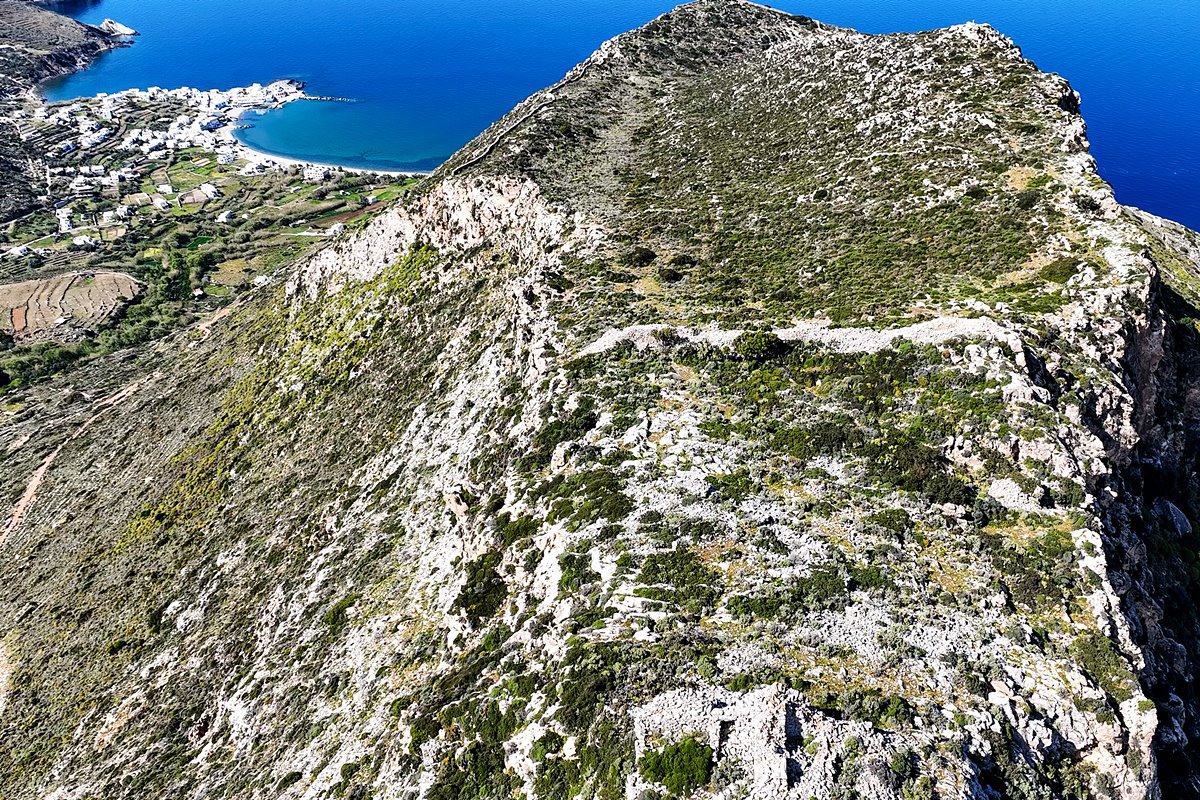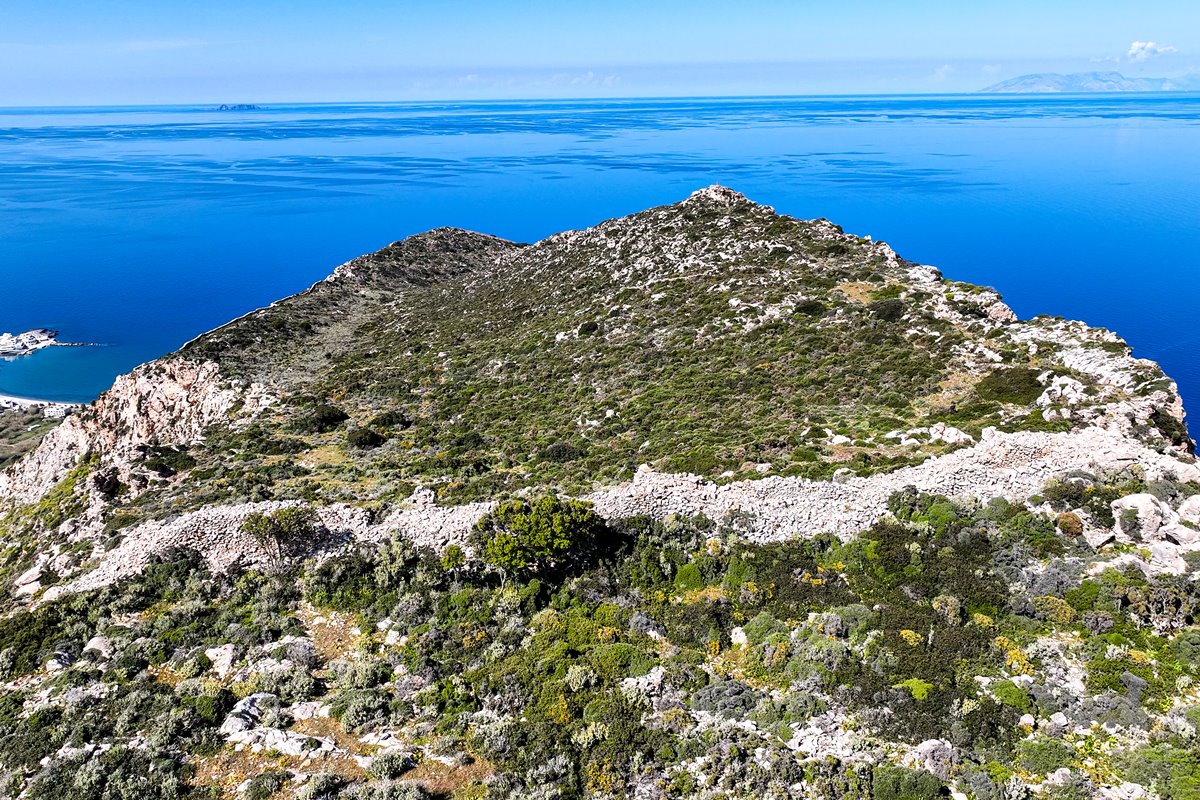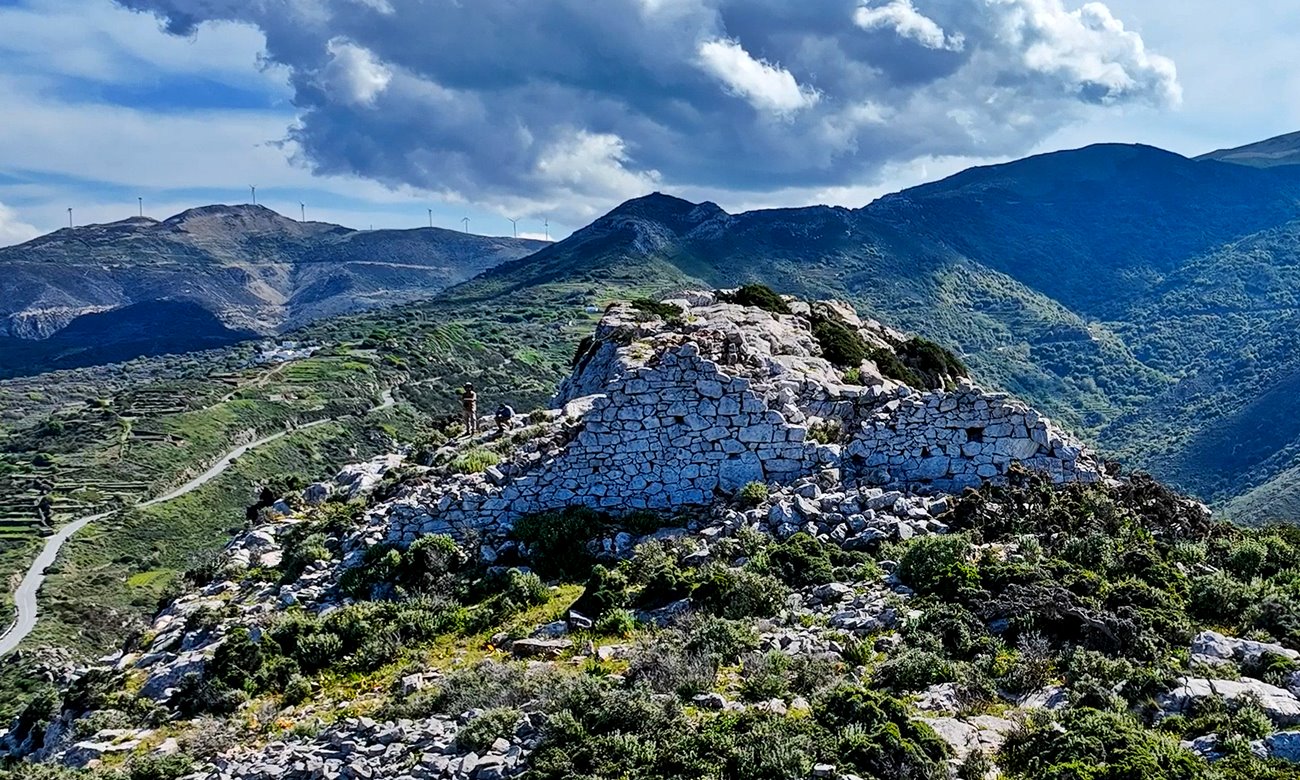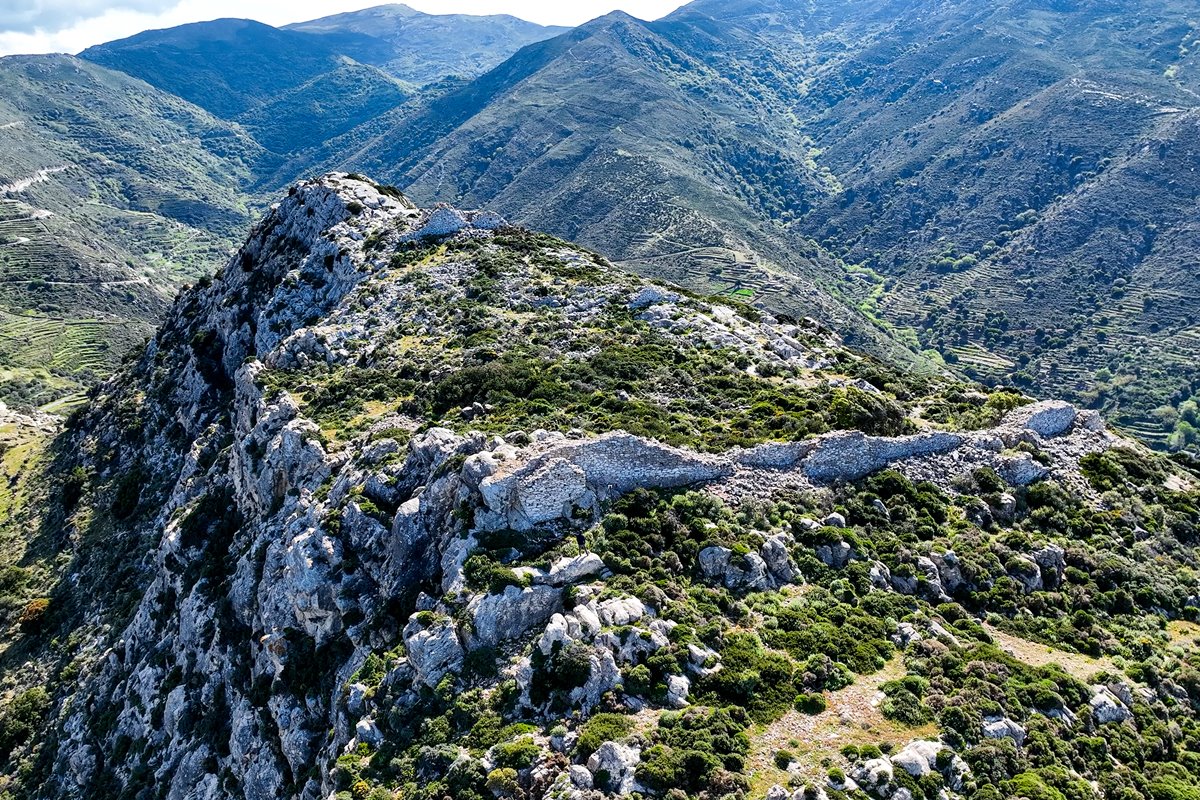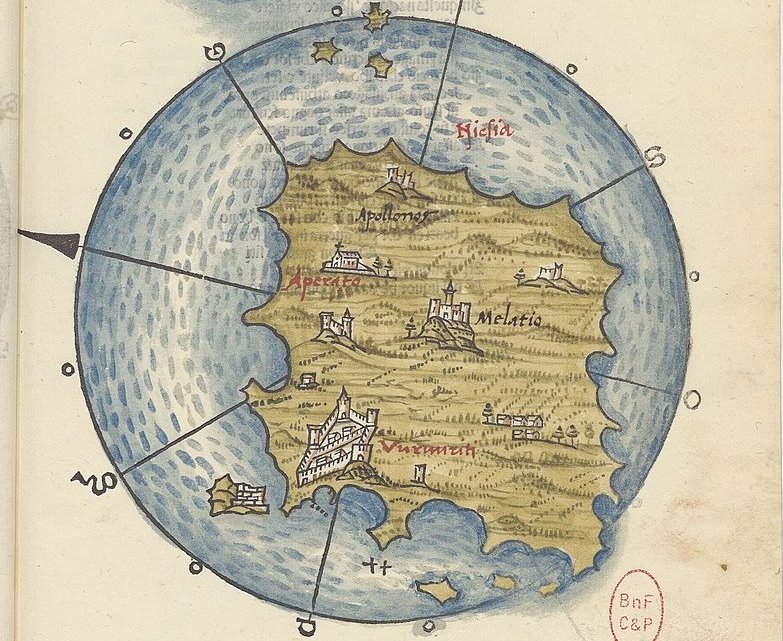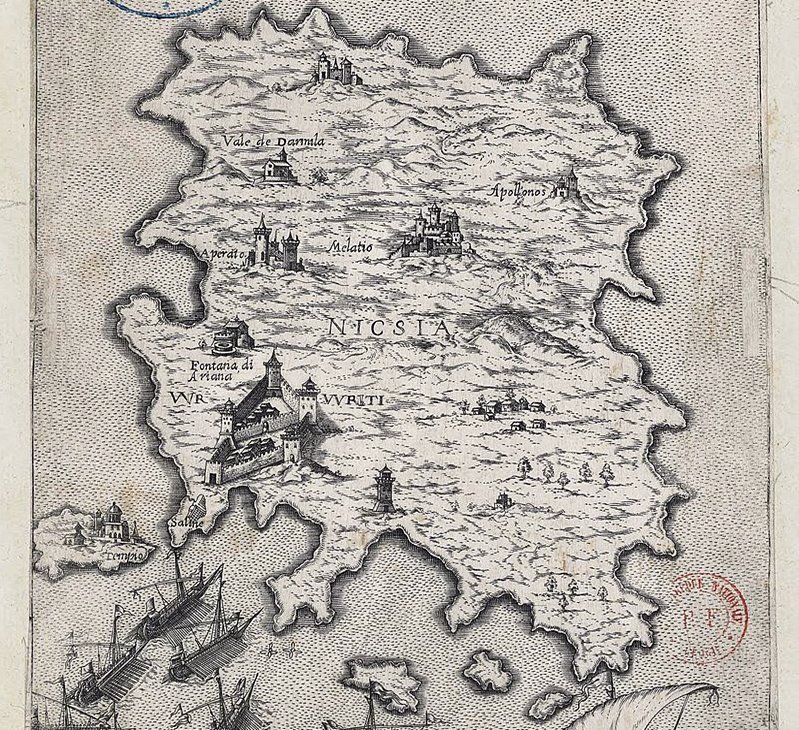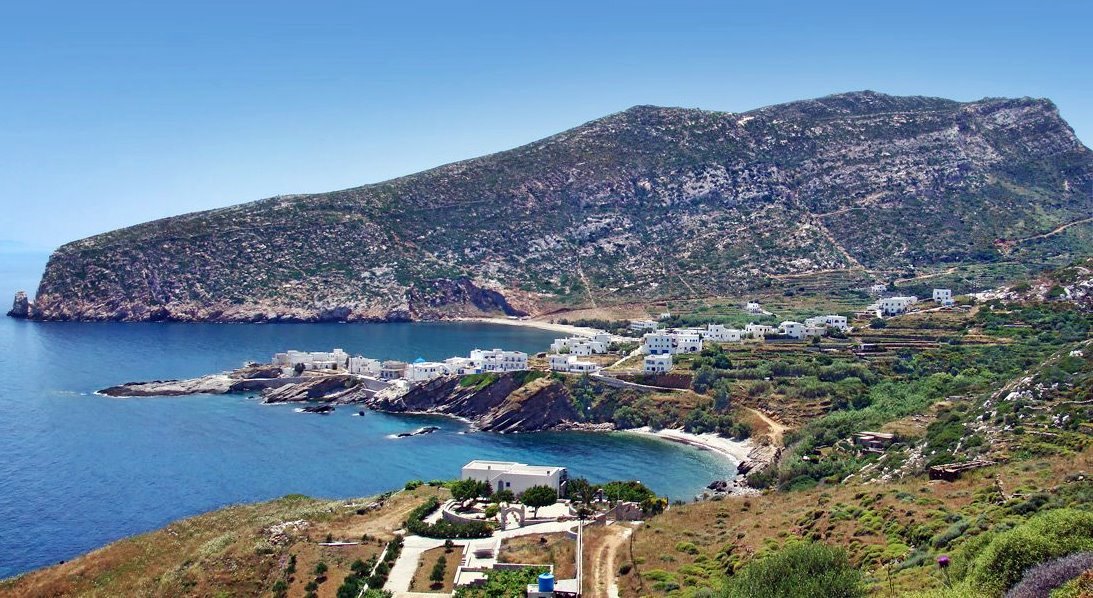Apollonas, Naxos, Cyclades,South Aegean
Castle of Kalogeros
| Location: |
| On a rocky mountain at the NW side of Naxos island, east of Apollonas |
| Region > Prefecture: | 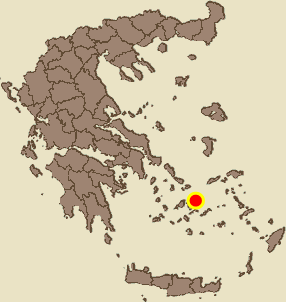 |
| South Aegean Cyclades | |
| Municipality > Town: | |
| City of Naxos • Apollonas | |
| Altitude: | |
| Elevation ≈ 355 m |
| Time of Construction | Origin | |
| perhaps 7th cent. | BYZANTINE |
|
| Castle Type | Condition | |
| Dry-Stone Fortification |
In Ruins
|
Large but ruined castle of the Middle Byzantine Period on the steep Kalogeros mountain, above the village of Apollonas, on the north-eastern coast of Naxos.
Location & Strategic Scope
The castle covers the large plateau at the top of the Kalogeros hill which does not have a high altitude (355 meters), but its slopes are very steep and access even today is extremely difficult. The position of the castle is excellent for the surveillance of navigation in the archipelago.
It could control the sea for a long distance to the east of Naxos and beyond Mykonos to the north.
History
The information we have from historical sources about the castle is minimal. Actually, the only sources that mention it are old maps. It is considered to be Byzantine (due to mode of construction and because if it were Venetian there would be much more information).
Apollonas in ancient times was a center for the production of statues, known as kouroi. From its small port, the sculptures were exported to the other islands of the Aegean and to mainland Greece. During the Middle Ages, when the pirate raids began, in the 7th century, it seems that the inhabitants were withdrawn away from the coast to protect themselves and found refuge in the Kalogeros mountain where they created this fortified settlement, which may have existed as a castle-refuge before.
So the medieval fortification in Kalogeros probably dates back to the 7th century to beginning of the 8th. It is, in other words, from the same period as the strongest Byzantine castle of Naxos, the castle Apaliros whose construction dates back to the beginning of the 8th century.
In contrast to other castles of the Byzantine period (such as Irokastro in the south) Kalogeros castle was inhabited throughout the Byzantine period, and was used – perhaps occasionally – also during the Venetian rule, until the early Tourkokratia. It was probably abandoned for good after the 16th century.
As can be concluded from its size, it was a large and important settlement. Old maps and illustrations of Naxos (photos 12, 13) show Apollonos as one of the three or four important cities of Naxos, in a position that was far from the sea. It is obvious that it was the settlement that we call here Castle of Kalogeros and not the current tourist village of Apollonas.
In a 1638 travel notebook by the Genoese Francesco Lupazzolo (from Chios) there is an illustration of the castle (see ARTWORK above) called Castello di Apollo with the note rovinato (=ruined). It is interesting that this illustration does not differ greatly from the photos of the castle above (photos 1, 4).
Structure, Fortification & Buildings
The castle was huge. It occupied the entire plateau of the peak of Kalogeros and covered an area of approximately 167,000 sq.m. The perimeter of the plateau (which was not walled along its entire length) reached 1950 meters while there was also an external wall, lower, on the western and northern slopes.
The layout of the castle looks like an isosceles triangle with the apex of the triangle at the southern edge of the rock. This part is separated from the rest of the castle by a cross wall/partition that divides the castle in two. The southern part (which is the one shown in most of the photos) is relatively the best preserved and appears to have been the administrative center. This section has an area of 4,500 sq.m. and a perimeter of 270 meters.
The walls do not seem to have all been built at the same time (but not long apart) and are not always aligned. In some places they give the impression of a hasty and sloppy construction (perhaps they were built under the threat of immediate danger).
The eastern and steeper side of the castle was unwalled, because the steep cliffs provided enough natural protection.
On the north and western sides of the rock there is an almost complete fortification wall which is founded on the rock. In some places large boulders of rock are embedded into the fortification. Of course, there is also a wall on the southern side, but it is not very long (there is the top of the triangle of the plateau, photos 2, 10).
The walls are relatively low: 3 to 5 meters high, as the inaccessible location made a higher fortification unnecessary. Their thickness varies between 1.40m and 4m with an average of 3m. At intervals the wall had towers. Two gates have been identified.
The masonry is mostly dry stone (no binding mortar) but there are several spots where mud was used as a binding material.
Inside the castle there are traces of a densely built settlement. Remains of churches, houses and warehouses have been found. Two rainwater collection cisterns with an interior plaster of kurasan have also been identified. There are probably other water tanks, as the castle was large and had no water sources.
| First entry in Kastrologos: | April 2024 |
Sources
- Website Cycladic Castles of the Ephorate of Antiquities of Cyclades, ΚΑΣΤΡΟ ΚΑΛΟΓΕΡΟΥ
- Video by the Ephorate of Antiquities of Cyclades Κάστρο Καλογέρου Νάξου (Νοέμβριος 2023)
- Eberhard H., «Βυζαντινά Κάστρα στις Κυκλάδες. Ο ρόλος και η σημασία τους», Κυκλαδικά Θέματα, τευχ. 27 (1988), σελ.177-181
- Νίκος Μερούσης , Χριστίνα Μουσταντάμη, «Ο Francesco Lupazzolo στη Νάξο (Αύγουστος του 1638)», ΦΛΕΑ, τεύχος 70-71, 2021, σελ.5-34
- Φασουλάκης Σ., «Ο Lupazzolo και η Νάξος», «Η Νάξος δια μέσου των αιώνων». Πρακτικά του Α΄ Πανελληνίου Συνεδρίου (Φιλώτι, 3-6 Σεπτεμβρίου 1992), Αθήνα 1994, 499-513.
- Αθανάσιος Δ. Κωτσάκης, «Η διαμόρφωση του πολιτισμικού τοπίου της νήσου Νάξου από το 1204 έως και την ίδρυση του Ελληνικού Κράτους», διδακτορική διατριβή, Πανεπιστήμιο Πελοποννήσου, Καλαμάτα, 2013
|
|
| Access |
|---|
| Entrance: |
| Free access. |



